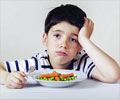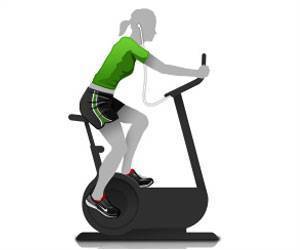A new study by researchers concludes that carefully measured, low doses of methylphenidate (Ritalin) are safe and effective for attention-deficit and hyperactivity disorder (ADHD) in preschoolers.
A new study by researchers from the Johns Hopkins Children’s Center and five other medical centers concludes that carefully measured, low doses of methylphenidate (Ritalin) are safe and effective for attention-deficit and hyperactivity disorder (ADHD) in preschoolers. Investigators warn, however, that 3- to 5-year-olds appear more sensitive to the drug’s side effects, which include irritability, insomnia and weight loss, than are older children with ADHD and require closer monitoring.
Children who took the drug also experienced somewhat slower growth rates. On average, children on the drug grew half an inch per year less than expected and gained 2.9 pounds less than expected. Researchers recommend that pediatricians weigh the risks of slowed growth rates against the benefits of treatment. Children on long-term treatment with methylphenidate should be monitored carefully several times a year to assess growth changes over time.Methylphenidate is the most widely prescribed drug for the treatment of ADHD in children but is not approved by the Food and Drug Administration (FDA) for use in children younger than 6.
Results of the federally funded research, the first large-scale, long-term study of the safety and value of the drug in younger children, appear in a special section of the November issue of the Journal of the American Academy of Child and Adolescent Psychiatry.
“These results give us the missing links in the decision to prescribe a drug that’s been widely used off-label in preschool-age children,” says Mark Riddle, M.D., director of Child and Adolescent Psychiatry at the Children’s Center and a co-author on the study, which followed 303 children between 3 and 5 over 70 weeks. “We were able to confirm what many already suspected-that even lower doses in preschoolers can safely achieve the desired therapeutic effect and indeed that low doses are often optimal.”
Children in the study were started on a low-dose regimen of medication ranging from 3.75 mg total daily to 22.5 mg total daily. By comparison, the cumulative daily dose for older children ranges from 15 mg per day to 50 mg per day. The optimal dose needed to reduce symptoms ranged widely in preschool-age children, but on average, 14 mg daily was effective in reining in symptoms.
“One of the surprises was that in some cases, doses as low as even 3 to 4 mg a day were helpful to some preschoolers, which goes to show that lower doses need to be given a chance before higher doses are tried,” Riddle explains.
Advertisement
“We want parents to know that trained professionals can make an accurate diagnosis and prescribe helpful and safe treatment in preschoolers with ADHD,” Riddle says. “But do expect your prescribing physician to monitor side effects closely and regularly and to tweak the dose if necessary.”
Advertisement
Source-Newswise
SRM











